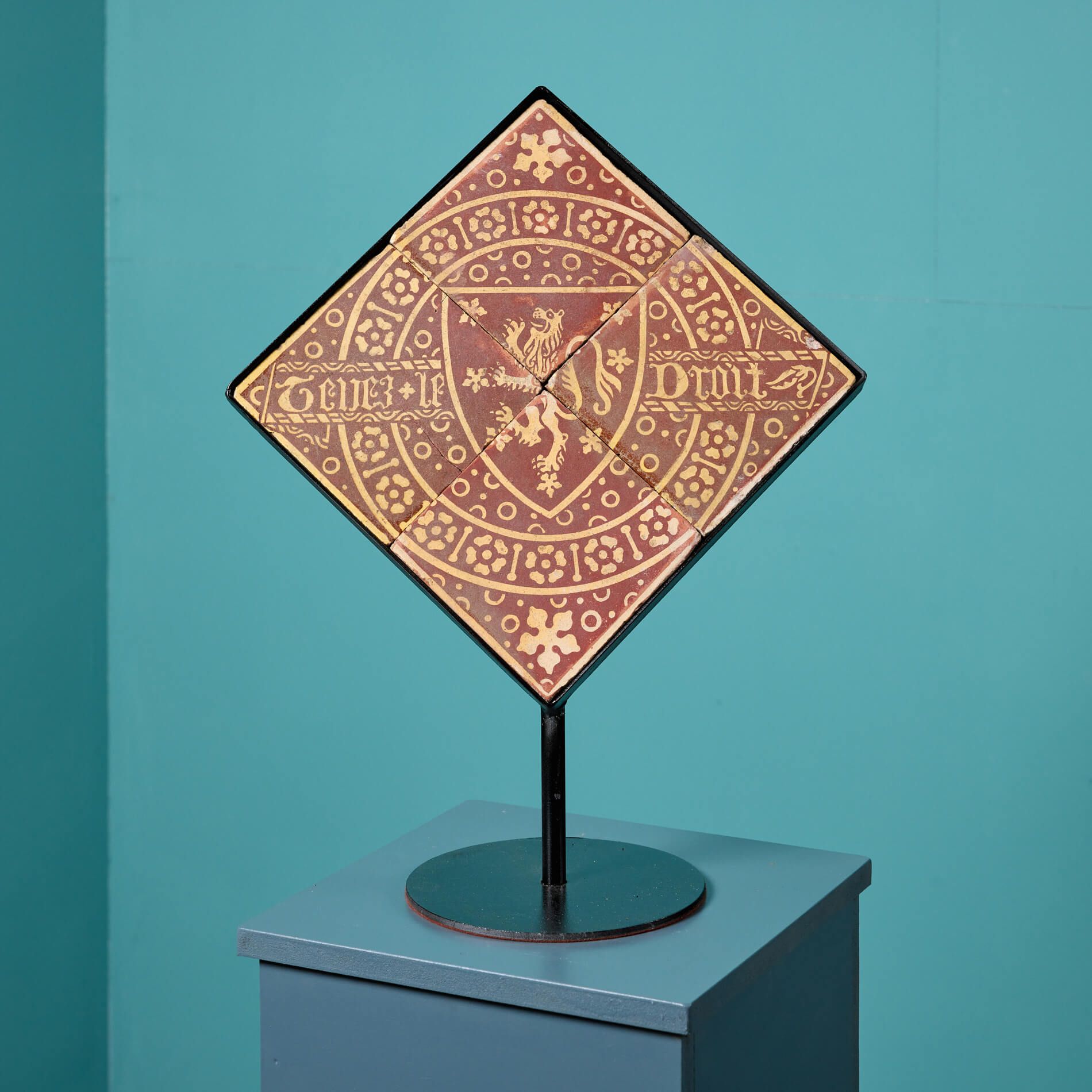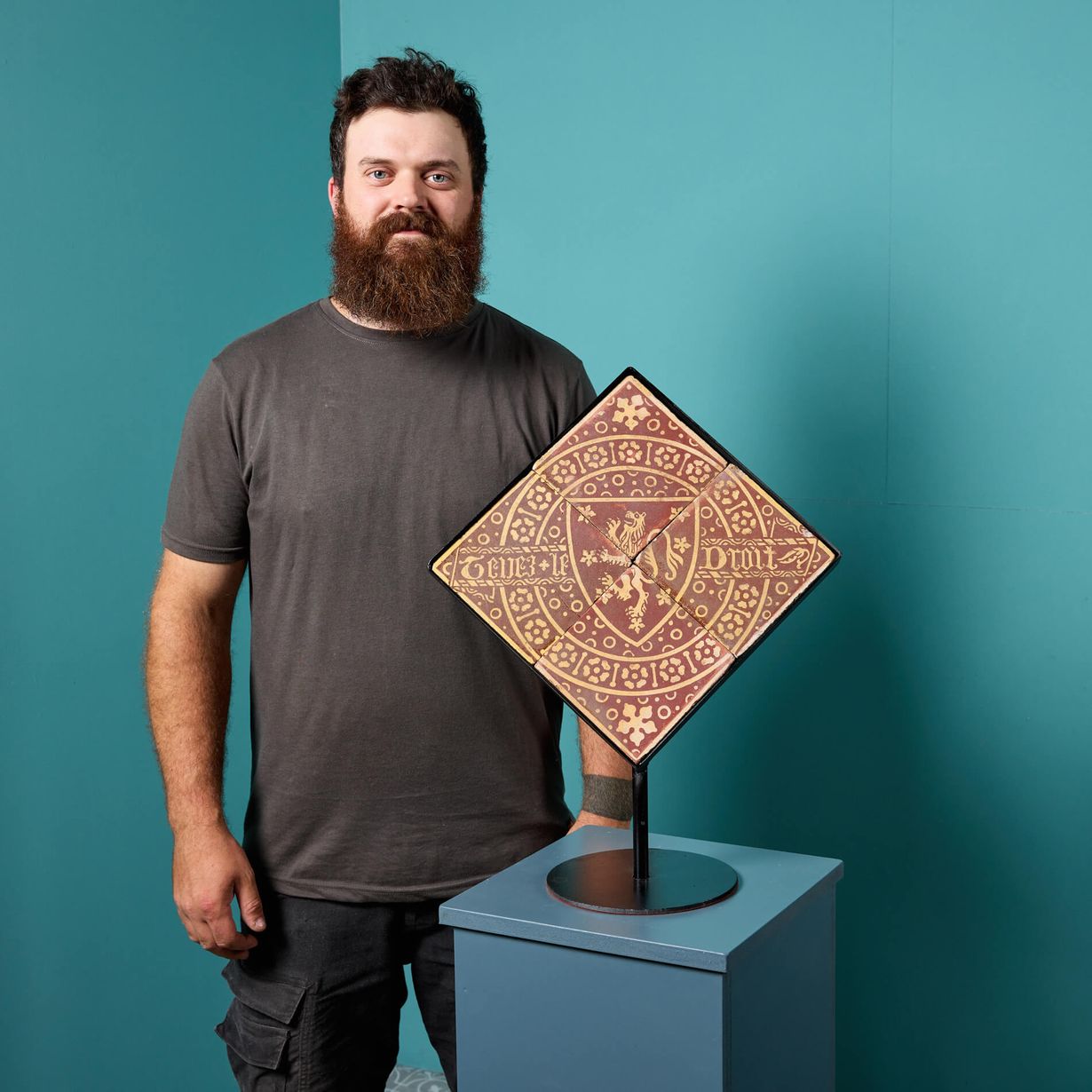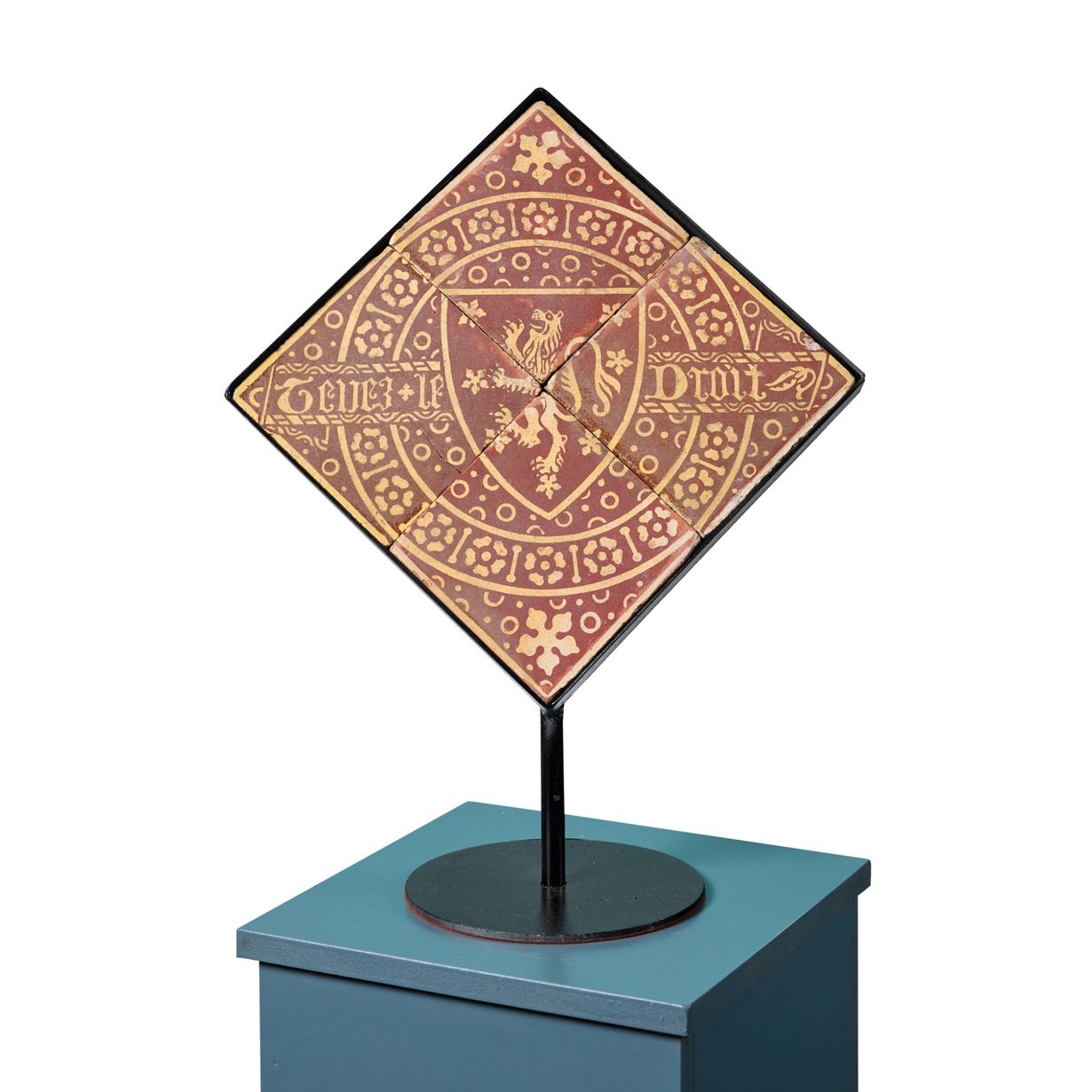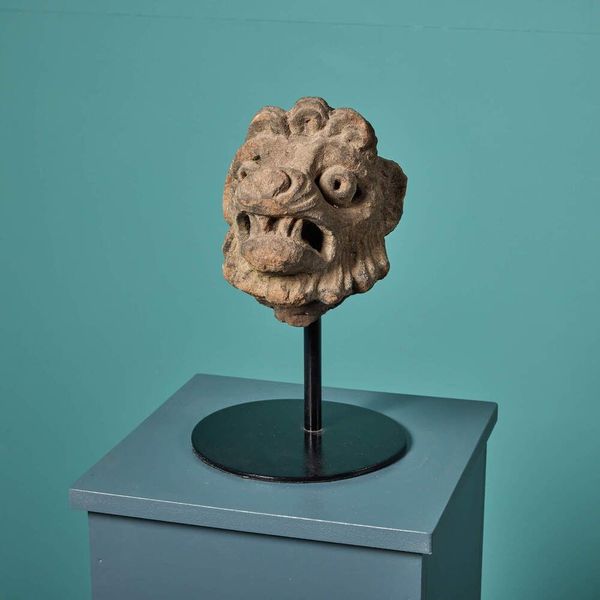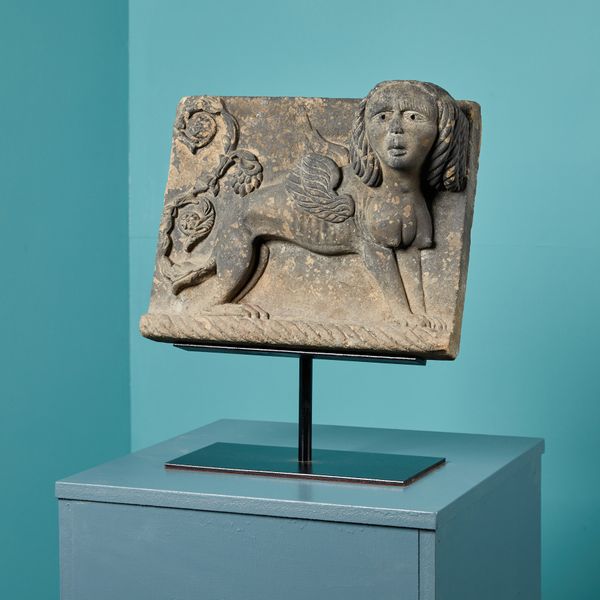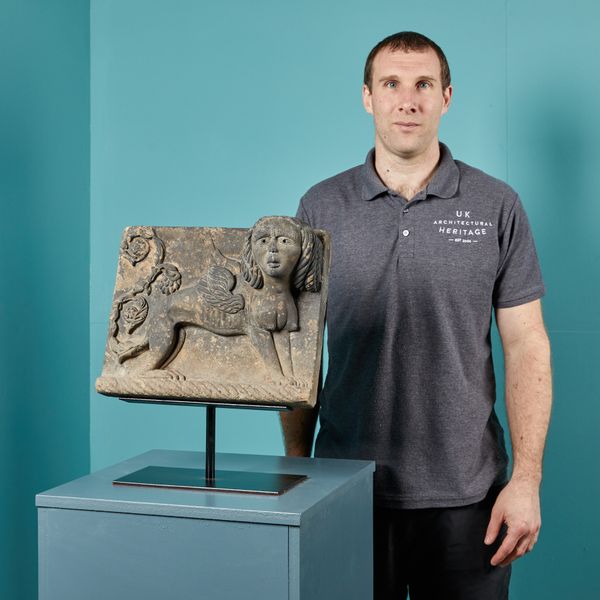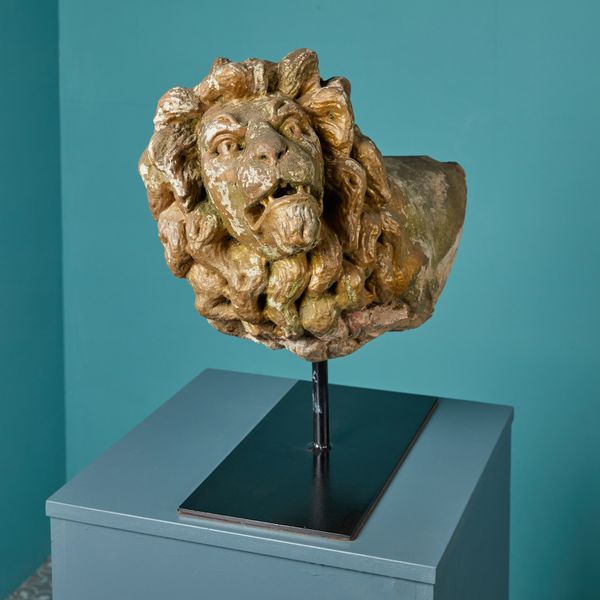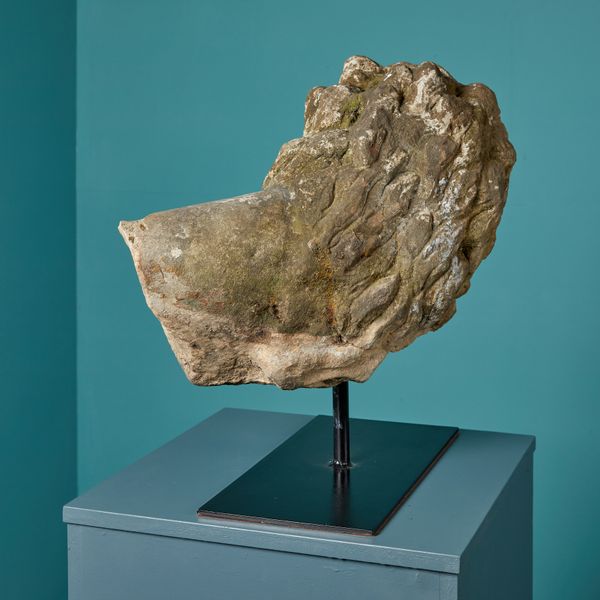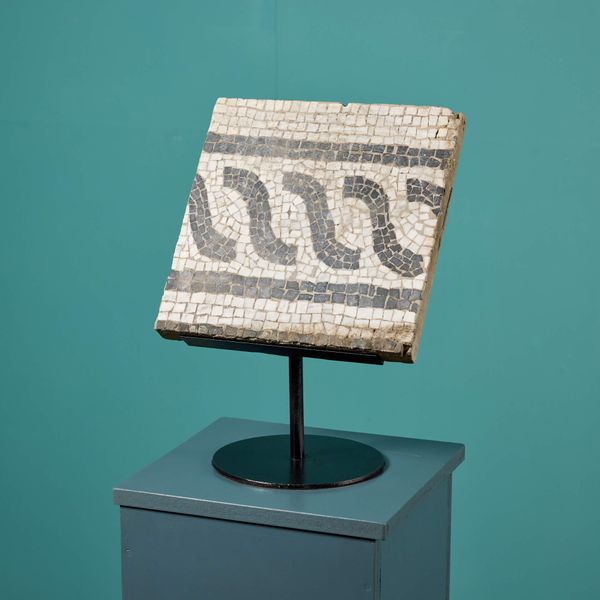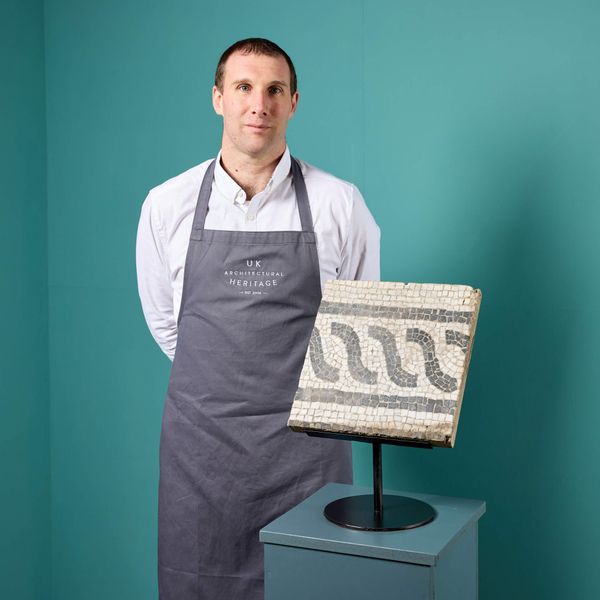About this piece
back to topTiles like these have decorated the floors of notable buildings for centuries. But while many have become steadily worn and weathered away by footfall, these four armorial tiles are a rare find, having remained in beautiful condition for more than 150 years.
Dating from the mid 19th century, these four reclaimed tiles are mounted on a bespoke steel stand so that their beauty and detail can be observed and appreciated up close. Together, the clay tiles depict a red (known in heraldry as Gules) and yellow/gold (referred to as Or) pattern depicting an unmarked, rampant lion within a shield alongside French inscription ‘Tenez le Droit’ which translates to ‘Uphold/Guard the Right’. Alongside the lion – a symbol of bravery – this crest is associated with the noble Clifton family who resided in Lancashire and Nottinghamshire as early as the Norman Conquest of 1066.
Encaustic Tiles
Made from clay, these tiles are called encaustic tiles as they are created using a process that dates back to the medieval times. Unlike unglazed tiles where patterns are inlaid or painted onto the tile, encaustic tiles use two or more tones of clay to create both the design and body of the tile. As a result, the pattern of encaustic tiles does not wear off as easily over time, indicating why these heraldic tiles are so well preserved.
Additional Information
Diameter of base 20cm
Mounted on a bespoke steel stand.
